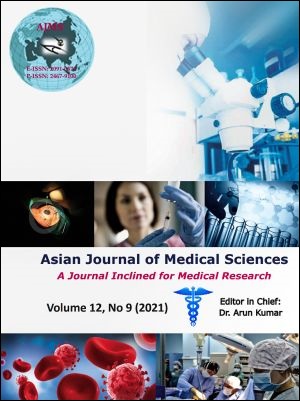The efficacy of WALANT technique in Hand Surgery
Keywords:
Efficacy, Hand Surgery, Wide Awake Local Anesthesia No Tourniquet (WALANT)Abstract
Background: Nowadays, Wide Awake Local Anesthesia No Tourniquet (WALANT) technique has gained popularity among surgeons because of its use in variety of surgical procedures because it provides excellent hemostasis, eliminating the need of tourniquet, sedation and the risk and cost of general anesthesia.
Aims and Objective: In this study, we wanted to evaluate its efficacy and the experiences of the patients and surgeons in different hand surgeries.
Materials and Methods: We had 108 patients who underwent various hand surgeries under WALANT technique. Patients and surgeons were requested to fill a questionnaire after the procedure. The procedure was evaluated in terms of the pain compared to a dental procedure, duration of the anesthesia, amount of bleeding and patients’ satisfaction.
Results: The mean age of our patients was 42.7 years. A variety of hand surgery was performed in our study. The mean local anaesthetic volume used was 16.5 ml. The Tang grading system was used to evaluate the levels of surgeon’s experience; 75% of surgeons were a Level 2, 18% Level 3 and 7% Level 4. Sixty-four patients experienced WALANT to be less than, 30 patients equivalent to and 8 had more pain compared to a dental procedure. There was a significant correlation between volume of local anesthetic used, duration of surgery and number of procedural components repaired. Both pain and anxiety levels were significantly less intra-operatively and postoperatively as compared to the level at the time of injection. Eighty-seven patients considered it to be better than expected, and would prefer it in the future in case they have to undergo surgery.
Conclusion: We observed that our patients were satisfied with their experience on WALANT technique and the surgical procedures, and we recommend the use of this for a variety of hand surgery procedures.
Downloads
Downloads
Published
How to Cite
Issue
Section
License
Copyright (c) 2021 Asian Journal of Medical Sciences

This work is licensed under a Creative Commons Attribution-NonCommercial 4.0 International License.
Authors who publish with this journal agree to the following terms:
- The journal holds copyright and publishes the work under a Creative Commons CC-BY-NC license that permits use, distribution and reprduction in any medium, provided the original work is properly cited and is not used for commercial purposes. The journal should be recognised as the original publisher of this work.
- Authors are able to enter into separate, additional contractual arrangements for the non-exclusive distribution of the journal's published version of the work (e.g., post it to an institutional repository or publish it in a book), with an acknowledgement of its initial publication in this journal.
- Authors are permitted and encouraged to post their work online (e.g., in institutional repositories or on their website) prior to and during the submission process, as it can lead to productive exchanges, as well as earlier and greater citation of published work (See The Effect of Open Access).




